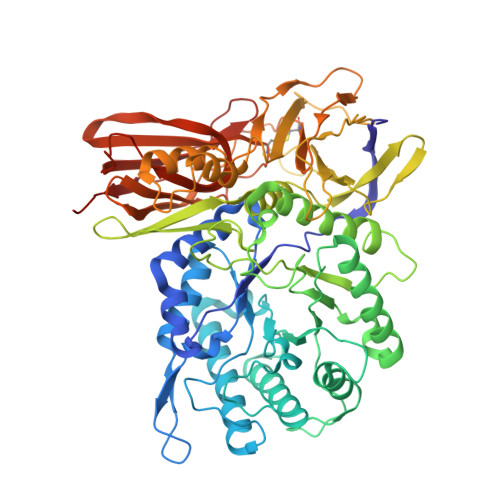Human alpha-L-iduronidase uses its own N-glycan as a substrate-binding and catalytic module
Maita, N., Tsukimura, T., Taniguchi, T., Saito, S., Ohno, K., Taniguchi, H., Sakuraba, H.(2013) Proc Natl Acad Sci U S A 110: 14628-14633
- PubMed: 23959878
- DOI: https://doi.org/10.1073/pnas.1306939110
- Primary Citation of Related Structures:
3W81, 3W82 - PubMed Abstract:
N-glycosylation is a major posttranslational modification that endows proteins with various functions. It is established that N-glycans are essential for the correct folding and stability of some enzymes; however, the actual effects of N-glycans on their activities are poorly understood. Here, we show that human α-l-iduronidase (hIDUA), of which a dysfunction causes accumulation of dermatan/heparan sulfate leading to mucopolysaccharidosis type I, uses its own N-glycan as a substrate binding and catalytic module. Structural analysis revealed that the mannose residue of the N-glycan attached to N372 constituted a part of the substrate-binding pocket and interacted directly with a substrate. A deglycosylation study showed that enzyme activity was highly correlated with the N-glycan attached to N372. The kinetics of native and deglycosylated hIDUA suggested that the N-glycan is also involved in catalytic processes. Our study demonstrates a previously unrecognized function of N-glycans.
- Laboratory of X-Ray Crystallography, Institute for Enzyme Research, University of Tokushima, Tokushima 770-8503, Japan. nmaita@tokushima-u.ac.jp
Organizational Affiliation:


























